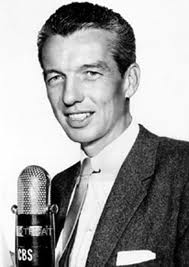Podcast: Play in new window | Download
Subscribe: Apple Podcasts | Spotify | Amazon Music | iHeartRadio | Email | TuneIn | RSS

Johnny investigates the disappearance of $20,000 in ambergris.
Original Air Date: May 19, 1957
Support the listener support campaign.
When making your travel plans, remember http://johnnydollarair.com
Become one of our friends on Facebook.
Take the listener survey.
Give us a call 208-991-4783
Follow us on Twitter @radiodetectives
Click here to add this podcast to your Itunes, click here to subscribe.

There are different kinds of noise heard on today’s OTR recordings. The Melancholy Memory Matter had the distinctive “underwater” quality I recognized as digital subsampling.
Many of the MP3’s we listen to on your show are copies of copies of copies.
The original performances added rattling script pages, coughs and off-stage sirens. The transcription discs cut during the performance may have been clean and clear during rebroadcast, but with age and repeated playing, many now sound like snap, crackle and pop.
In the seventies and eighties, many discs were copied to cassette tape (and the original discs thrown away), adding tape hiss to the mix.
Many rare Dr. Who or Jean Shepherd episodes are only available today because some listeners (illegally) recorded them off their radios onto reel-to-reel tape (preserving the radio static).
When the music world adapted CDs as the standard, music producers could go back to the vaults and make fresh mixes from the master tapes of classic albums, optimized to take advantage of CD’s clarity.
The OTR world was not so lucky.
In the nineties, I converted many vinyl albums and cassettes on my underpowered 386 PC.
The key operation is analog-to-digital conversion: change the signal from the vibrating needle to a digital WAV file by sampling 44000 times a second.
Then convert the 650 megabyte WAV to a reasonably sized 30Mb MP3 file.
My cheap equipment and primitive algorithms couldn’t always keep up with the data flow. I’d get bored with the slow conversion process and open up a new window to read USENET, all while downloading MP3s from Napster.
The CPU and the file buffer couldn’t keep up and would start subsampling, grabbing samples whenever it could. It made a WAV file alright, but with an unintentional Variable Bit Rate. During the MP3 conversion, the algorithm looks for any frequency it can to fit through the reduced number of samples and often locks onto a very low frequency.
This leads to the rumbling, muffled underwater sound we heard on the Johnny
Dollar episode.
Most of the radio episodes from the OTRR group are done right, direct from the transcription disc using the finest equipment. But others were done by amateurs like me with more enthusiasm than talent.
Tim Szeliga